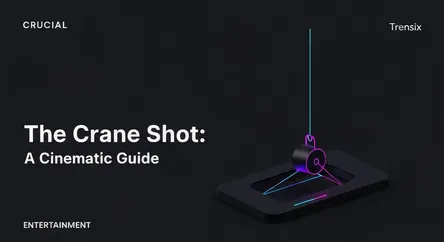Entertainment
The Crane Shot: A Cinematic Guide

Discover the crane shot, a dynamic filmmaking technique where the camera moves on a crane. Learn how it creates epic, sweeping visuals in movies.
What is it?
A crane shot is a cinematic technique where the camera is mounted on a mechanical arm, known as a crane or jib, allowing it to move fluidly through space. This movement can be vertical, horizontal, or a combination of both. Unlike a static shot, a crane shot can ascend to reveal a vast landscape, descend into an intimate scene, or sweep across a dynamic action sequence. It provides a director with a powerful tool to change perspective dramatically within a single, unbroken take, offering a grander scale and a more dynamic visual experience than most other camera movements.
Why is it trending?
While a classic technique, the crane shot remains a timeless and essential part of cinematic language. It's frequently used in blockbuster films for epic establishing shots and dramatic reveals, creating unforgettable visual moments. Film analysis on platforms like YouTube and TikTok has brought a renewed appreciation for specific filmmaking techniques, with creators breaking down iconic crane shots from classic and contemporary movies. Its ability to add immense production value and a 'big-screen' feel ensures it remains a celebrated and widely used tool by directors seeking to make a significant visual impact.
How does it affect people?
The crane shot profoundly influences an audience's emotional and spatial understanding of a scene. A shot that rises up and away from a character can create a feeling of isolation, finality, or awe, emphasizing their smallness in a large world. Conversely, a shot that descends toward a subject can build tension or focus the viewer's attention with a sense of inevitability. This god-like perspective allows the audience to see the bigger picture, providing context and emotional weight that immerses them more deeply into the film's narrative and atmosphere.